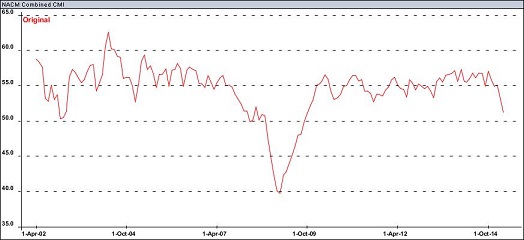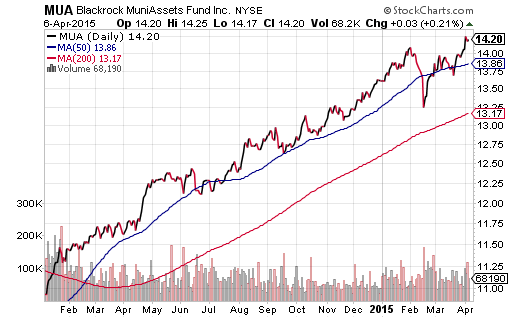Economists should not have been stunned by downward revisions to job creation for January and February. Similarly, analysts should not have been surprised by the painfully weak jobs data for March – information that confirmed the seriousness of the ailing U.S. economy.
Some folks are clinging to the hope that the slowdown is attributable to poor weather and West Coast port disputes. They want to believe that decelerating manufacturing activity, corporate revenue shortfall, weak consumption and unimpressive job creation are temporary. Yet the Federal Reserve itself recently downgraded its economic outlook for the the rest of 2015, 2016 and 2017. Two years and nine months? Does that sound like an economic “soft patch?”
Clearly, Fed committee members recognize that something more onerous is at play. The real question is, what will Janet Yellen and her colleagues do about it? If market activity on Monday, April 6 was any indication – a sharp decline for the greenback via PowerShares U.S. Dollar Bullish (NYSE:UUP), a big time jump for the yellow metal via SPDR Trust Gold (ARCA:GLD), a six percent leap for commodities like oil as well as a broad market rally for stocks – traders have convinced themselves that the Fed won’t be raising overnight lending rates anytime soon.

April investors may be breathing a collective sigh of relief that the stock market is holding up. On the other hand, just how vulnerable is the U.S. economy to an actual recession if the Fed cannot even hike borrowing costs by a token increment (0.25%)? A self-sustaining economy should be able to handle hikes in overnight lending rates by several percentage points across eight, nine or 10 central bank meetings. Instead, a mere five months after the Fed formerly ended emergency level stimulus known as QE3 (i.e., third round of quantitative easing), uncertainty reins supreme.
We can note that the general uptrend for U.S. stocks is intact. However, the gains have been muted, particularly when one compares those gains with safer haven U.S. Treasury bonds. For instance, the S&P 500 has managed to climb roughly 4% since the end of QE3, whereas the perceived safety of longer-term bonds via iShares 20+-Year Treasury Bond (ARCA:TLT) offered closer to 10% in the same period.

Doubt about the U.S. economy’s ability to sustain itself without Federal Reserve rate manipulation, as well as lack of confidence in the ability of U.S. companies to generate profits and revenue in the current environment, go a long way toward explaining why longer-term Treasury bonds are outperforming stocks. Even if investors convince themselves that the Fed will not raise borrowing costs at any point in 2015, public companies may fail to hurdle a very low bar. Flat profits and flat revenues may be enough to keep stocks range-bound, but earnings and sales declines might send stocks for a tumble. (And then what would the Fed do…hint at the possibility of QE4?)
I may be discussing QE4 in jest, but there are very real risks in the slightest move toward raising benchmark borrowing costs. How does one know? The Credit Managers Index (CMI) via the National Association of Credit Managers recently demonstrated extraordinary stress in the amount of credit being extended to businesses (or lack thereof) as well as the number of rejected credit applications. Below is the CMI in chart form, care of Alexander Giryavets at Advisor Perspectives. One may wish to compare what happened to CMI in 2007 prior the recession and what may be transpiring today.

In my estimation, the Fed is aware just how tenuous its grip is on lending activity. If the extension of credit is declining at a rapid clip on the mere suggestion that the Fed wishes to normalize borrowing costs, how bad will the credit crunch be if the Fed actually begins a rate hike campaign in earnest?
Throughout the year, I have suggested that the Fed will get no farther than a token 0.25% hike in the overnight lending rate in 2015, and they may only do so to save face. The economic data itself will not support more. In fact, the data may suggest more accommodation, not less, before the year is out. However, the Bernanke/Yellen Federal Reserve tends to make conciliatory comments only after equity sell-offs approach key percentage levels (e.g., 10% level for October’s “Bullard bounce,” 20% during euro-zone crisis, etc.). In other words, those who are counting on a Fed rescue might not get words of comfort and assurance unless the S&P 500 approaches 1900.
Stick with the barbell. Specifically, hold onto those stock ETFs with price momentum and technical uptrends, including SPDR Select Health Care (ARCA:XLV), Vanguard Mid Cap Value (NYSE:VOE) and iShares Currency Hedged Germany (NYSE:HEWG). Offset your equity exposure with long-term Treasuries via ETFs like iShares 20+ Year Treasury (TLT) and closed-end muni funds like Blackrock Muni Assets (NYSE:MUA).

Disclosure: Gary Gordon, MS, CFP is the president of Pacific Park Financial, Inc., a Registered Investment Adviser with the SEC. Gary Gordon, Pacific Park Financial, Inc, and/or its clients may hold positions in the ETFs, mutual funds, and/or any investment asset mentioned above. The commentary does not constitute individualized investment advice. The opinions offered herein are not personalized recommendations to buy, sell or hold securities. At times, issuers of exchange-traded products compensate Pacific Park Financial, Inc. or its subsidiaries for advertising at the ETF Expert web site. ETF Expert content is created independently of any advertising relationships.
